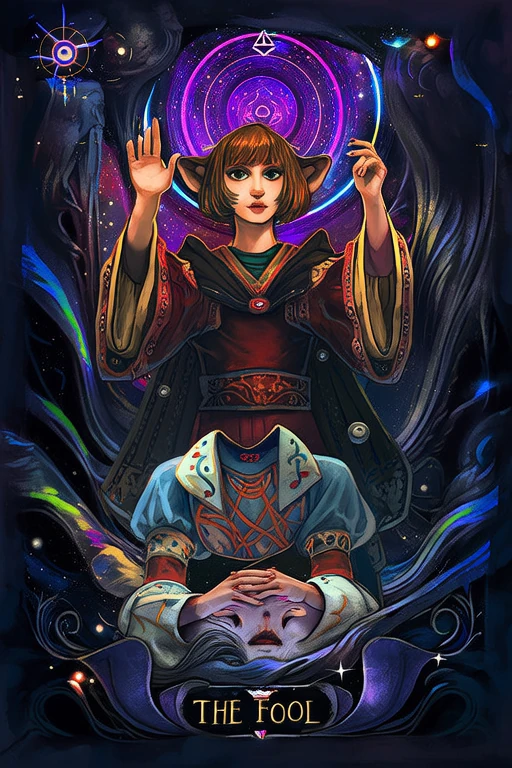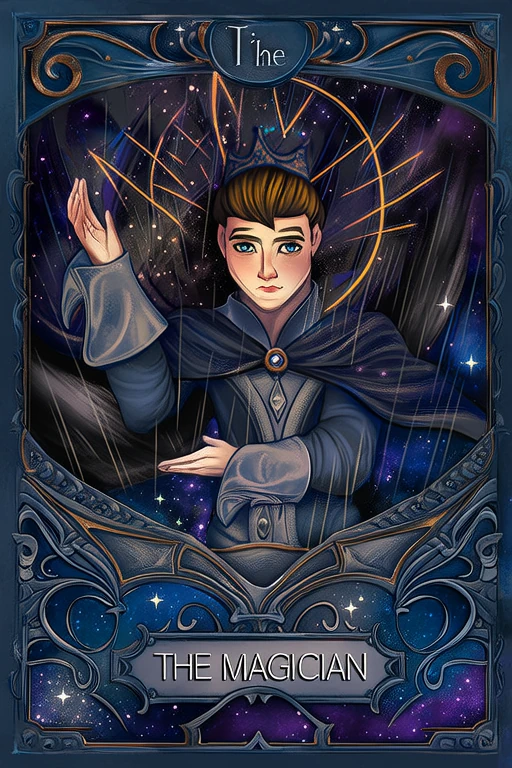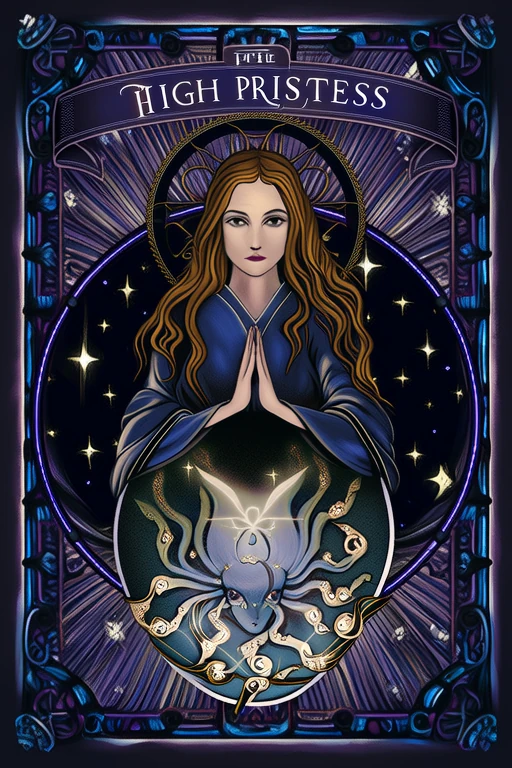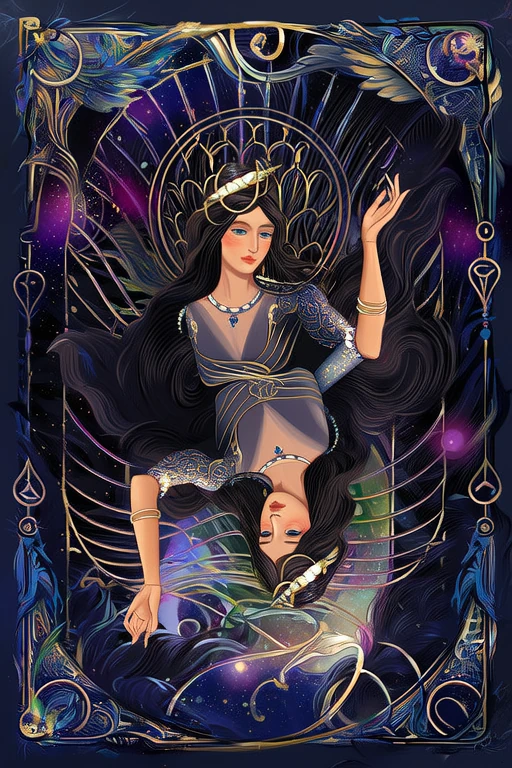
The Hierophant
Discover the deep meaning of The Hierophant with our free AI-powered tarot interpretation. Get instant, accurate readings based on advanced tarot knowledge.
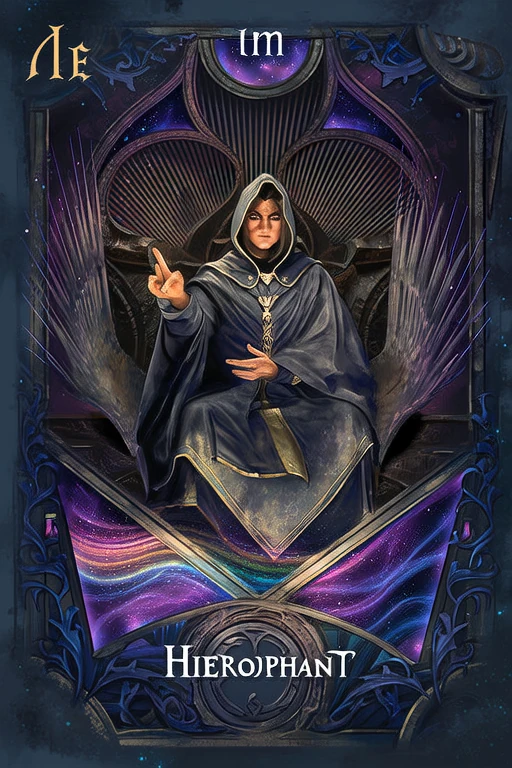
Keywords
Upright Meaning
Tradition, conformity, morality, ethics
Reversed Meaning
Challenge beliefs, personal morality, freedom
Full Interpretation
The Hierophant represents tradition, spiritual wisdom, and following established beliefs.
In-Depth Analysis
📜 Historical Background
The Hierophant, known in earlier tarot decks as 'The Pope,' is the fifth card of the Major Arcana and holds a significant place in the tarot's symbolic journey. Its origins trace back to the early 15th century when tarot cards were first created in Italy as playing cards. The earliest known tarot deck, the Visconti-Sforza, depicted the card as a Pope-like figure seated between two pillars, holding a triple cross, flanked by two kneeling figures. This imagery symbolized religious authority, spiritual guidance, and the transmission of sacred knowledge.
In medieval Europe, the Church held immense power, and the figure of the Pope was not only a spiritual leader but also a political one. The Hierophant thus emerged as a representation of institutional religion, tradition, and moral law. However, as tarot evolved from a game into a tool for esoteric and mystical practices in the 18th and 19th centuries, the card's meaning expanded beyond Catholic symbolism. Occultists like Eliphas Lévi and the members of the Hermetic Order of the Golden Dawn reinterpreted the card as a symbol of spiritual wisdom, initiation, and the role of the teacher or guide in esoteric traditions.
The name 'Hierophant' itself comes from the Greek word meaning 'one who shows sacred things,' a title historically given to the chief priest in the Eleusinian Mysteries of ancient Greece. This connection to mystery schools and secret teachings gave the card a deeper, more mystical dimension. In many modern tarot decks, such as the Rider-Waite-Smith, the Hierophant is shown seated on a throne with two pillars behind him, holding a papal staff, with three figures kneeling before him. These figures often symbolize the transmission of knowledge, tradition, and the spiritual hierarchy.
Throughout history, different tarot decks have offered varied interpretations of the Hierophant. In the Thoth Tarot, designed by Aleister Crowley and Lady Frieda Harris, the card is titled 'The Magus' and represents the power of magical will and spiritual mastery. The Marseille Tarot, one of the oldest and most influential tarot designs, depicts a more simplistic Pope figure with a triregnum (three-tiered papal tiara) and holding a blessing hand gesture, emphasizing the card's role in religious authority and tradition.
Culturally, the Hierophant has been interpreted in numerous ways depending on the spiritual or religious context of the reader. In some traditions, it represents conformity, dogma, and the dangers of blind faith. In others, it symbolizes the importance of spiritual guidance, moral integrity, and the need for structure in one's spiritual life. As tarot continues to evolve in the modern era, the Hierophant remains a powerful symbol of tradition, teaching, and the bridge between the material and spiritual worlds.
Symbolism & Imagery
The Hierophant is rich in symbolism, with each element of its imagery offering layers of meaning that reflect spiritual authority, tradition, and the transmission of sacred knowledge. At the center of the card is a figure seated on a throne, often depicted wearing a triple-tiered crown or tiara (triregnum), symbolizing the unity of the physical, mental, and spiritual realms. He holds a staff or key, representing spiritual authority and access to hidden wisdom. Behind him are two pillars, often labeled B and J, which stand for Boaz and Jachin—the two pillars at the entrance of Solomon’s Temple—symbolizing strength and establishment, as well as divine order and structure.
Two kneeling figures are commonly shown at the Hierophant’s feet, receiving blessings or instruction. These individuals represent the seekers of wisdom, the disciples, or the followers who rely on the guidance of a spiritual teacher or institution. The garments worn by the central figure are typically red and blue, symbolizing passion and spirituality, respectively. These colors also reflect the balance between the material and the divine.
The Hierophant’s symbolism is deeply rooted in numerology as well. As the fifth card of the Major Arcana, it corresponds to the number 5, which signifies change, challenge, and the search for truth. In many cultures, the number 5 also represents the five senses, the five elements (earth, air, fire, water, and spirit), and the five points of the human body extended in the Vitruvian Man. This reinforces the card’s role as a bridge between the earthly and the spiritual.
Interpretations of the Hierophant vary across cultures and spiritual traditions. In Western esotericism, it represents the role of the initiate, the teacher, or the priest who guides others on their spiritual path. In some interpretations, especially in more secular or feminist tarot readings, the card may be seen as cautioning against rigid dogma or institutional control. In contrast, in Eastern or holistic spiritual practices, the Hierophant can represent a guru, a spiritual mentor, or a sacred tradition that offers guidance and moral clarity.
When the Hierophant appears upright in a reading, it generally signifies tradition, spiritual guidance, structured learning, and adherence to established norms. It may suggest the need for seeking advice from a mentor, following ethical principles, or respecting cultural or religious customs. In the reversed position, the card can indicate rebellion against authority, questioning traditional beliefs, or the need to find one’s own spiritual path outside of established systems.
The Hierophant also has strong connections to other Major Arcana cards. It follows The Emperor and The Empress, suggesting that after establishing structure and balance in the material world, one must now seek higher meaning and spiritual order. It precedes The Lovers, indicating that spiritual understanding often informs personal choices and relationships. In the tarot journey, the Hierophant serves as a guidepost, reminding us that wisdom is often passed down through generations and that spiritual growth often requires both tradition and introspection.
Psychological Insights
From a psychological perspective, the Hierophant resonates deeply with Carl Jung’s concept of archetypes—universal symbols embedded in the collective unconscious. In Jungian terms, the Hierophant embodies the archetype of the Sage or the Wise Old Man, representing authority, tradition, and the transmission of knowledge. This archetype serves as a guide, helping individuals navigate moral dilemmas, seek deeper truths, and understand their place within a broader cultural or spiritual framework.
In modern life, the Hierophant encourages individuals to seek wisdom from established systems, mentors, or traditions. It suggests that there is value in learning from those who have walked the path before us, whether in the form of teachers, spiritual leaders, or time-tested philosophies. For those facing decisions about education, career paths, or ethical dilemmas, the Hierophant advises consulting experts, adhering to proven methods, or honoring long-standing values.
On a personal growth level, the Hierophant can signify the need to establish inner discipline, align with one’s moral compass, and integrate spiritual insights into daily life. It encourages self-awareness by prompting individuals to examine the beliefs they have inherited and determine which ones still serve their highest good. This process of discernment is crucial for personal evolution and spiritual maturity.
In therapeutic and counseling settings, the Hierophant can be a powerful symbol for clients seeking structure, guidance, or meaning in their lives. It may appear in readings for individuals undergoing therapy, exploring religious or spiritual questions, or needing to reconnect with their cultural or familial roots. Counselors and life coaches may use the card to encourage clients to seek mentorship, join supportive communities, or engage in structured learning programs.
In modern spiritual practices, the Hierophant plays a key role in rituals, initiations, and teachings. It is often invoked in ceremonies that mark rites of passage, such as weddings, ordinations, or spiritual awakenings. Many practitioners use the card during meditation or energy work to connect with higher wisdom, seek guidance from spiritual teachers, or deepen their understanding of sacred texts and traditions.
Ultimately, the Hierophant serves as a reminder that wisdom is both inherited and discovered. It challenges individuals to honor the past while remaining open to personal spiritual evolution. Whether through formal education, religious practice, or mentorship, the Hierophant encourages us to seek truth, embrace tradition, and become conduits of wisdom for others.
Correspondences
The Hierophant is deeply connected to the zodiac sign Taurus, ruled by Venus, which brings themes of stability, sensuality, and appreciation for tradition. Taurus’s earthy nature aligns with the Hierophant’s emphasis on structure, while Venus’s influence adds a layer of harmony, beauty, and ethical values. The card is also associated with the planet Mercury, which governs communication, learning, and the transmission of knowledge—key themes in the Hierophant’s role as a teacher and guide.
In terms of gemstones and crystals, the Hierophant resonates with stones that enhance wisdom, spiritual clarity, and grounding. Amethyst is often linked to this card due to its association with spiritual insight and protection. Lapis Lazuli, known as the stone of wisdom and truth, supports the Hierophant’s role in guiding seekers toward higher knowledge. Green Aventurine and Rose Quartz, both connected to Venus, promote harmony and compassion, reinforcing the card’s themes of spiritual love and ethical guidance.
Herbs and essential oils associated with the Hierophant include Frankincense, Myrrh, and Sandalwood—sacred resins used in spiritual rituals and ceremonies for centuries. These oils are often used in meditation, purification, and prayer, aligning with the Hierophant’s role as a spiritual leader and guide. Lavender and Chamomile may also be used to promote calm, clarity, and openness to divine wisdom.
The Hierophant is linked to the element of Earth, emphasizing stability, tradition, and grounded wisdom. It corresponds to the late spring season, a time of growth and consolidation, reflecting the card’s role in establishing spiritual and moral foundations. In terms of time, the card is often associated with midday, when the sun is high and clarity is at its peak—symbolizing the illumination of truth and the strength of established structures.
In chakra work, the Hierophant primarily influences the Throat Chakra (Vishuddha), associated with communication, truth, and the expression of wisdom. It also connects with the Heart Chakra (Anahata), reinforcing themes of compassion, spiritual love, and ethical values. Balancing these chakras can help individuals align with the Hierophant’s energy of spiritual guidance and moral clarity.
Numerologically, the Hierophant is the fifth card of the Major Arcana, corresponding to the number 5, which symbolizes change, adaptability, and the search for truth. This reinforces the card’s role as a bridge between tradition and transformation, encouraging individuals to seek wisdom while remaining open to new understandings.
❓ Frequently Asked Questions
The Hierophant is one of the more complex and often misunderstood cards in the tarot. Here are some frequently asked questions and insights to help deepen your understanding of its meaning and application in readings:
**1. What does the Hierophant mean in a love reading?** In a love context, the Hierophant can signify a relationship that is grounded in tradition, shared values, or spiritual connection. It may suggest marriage, commitment, or a union blessed by family or religious institutions. Reversed, it can indicate challenges to traditional relationship structures or the need to break free from limiting beliefs about love.
**2. What does the Hierophant mean in career and finance readings?** In career readings, the Hierophant often points to working within established systems, following protocols, or seeking mentorship. It may indicate a job in education, religion, law, or counseling. Financially, it suggests conservative approaches, investing in stable institutions, or seeking expert financial advice.
**3. What is a common misconception about the Hierophant?** Many beginners interpret the Hierophant solely as a symbol of organized religion or strict authority. However, its meaning is broader—it represents any system of knowledge, tradition, or guidance that provides structure and wisdom, whether spiritual, academic, or cultural.
**4. What are effective spreads for reading the Hierophant?** The Hierophant works well in a three-card spread focused on past, present, and future, especially when exploring themes of learning, guidance, or spiritual development. The Celtic Cross is also effective, as it can reveal how tradition, authority, or mentorship influences the querent’s current situation.
**5. How does the Hierophant interact with other cards?** The Hierophant pairs well with The High Priestess (spiritual intuition), The Emperor (structure and authority), and Justice (ethical decision-making). When combined with The Devil, it may warn against blind adherence to corrupt systems. With The Star, it indicates spiritual healing through tradition and guidance.
**6. How should I interpret the Hierophant in a reversed position?** Reversed, the Hierophant often suggests questioning authority, rejecting dogma, or seeking wisdom outside traditional frameworks. It may indicate a need for personal spiritual exploration or a break from rigid structures that no longer serve the individual.
**7. How can I use the Hierophant in personal growth readings?** Use the Hierophant to explore your relationship with authority, tradition, and spiritual teachings. Ask: What beliefs have I inherited that no longer serve me? Who are my spiritual teachers? How can I integrate wisdom into my daily life?
By understanding the nuances of the Hierophant, readers can offer more insightful and balanced interpretations, helping querents navigate questions of tradition, guidance, and spiritual wisdom with clarity and depth.
